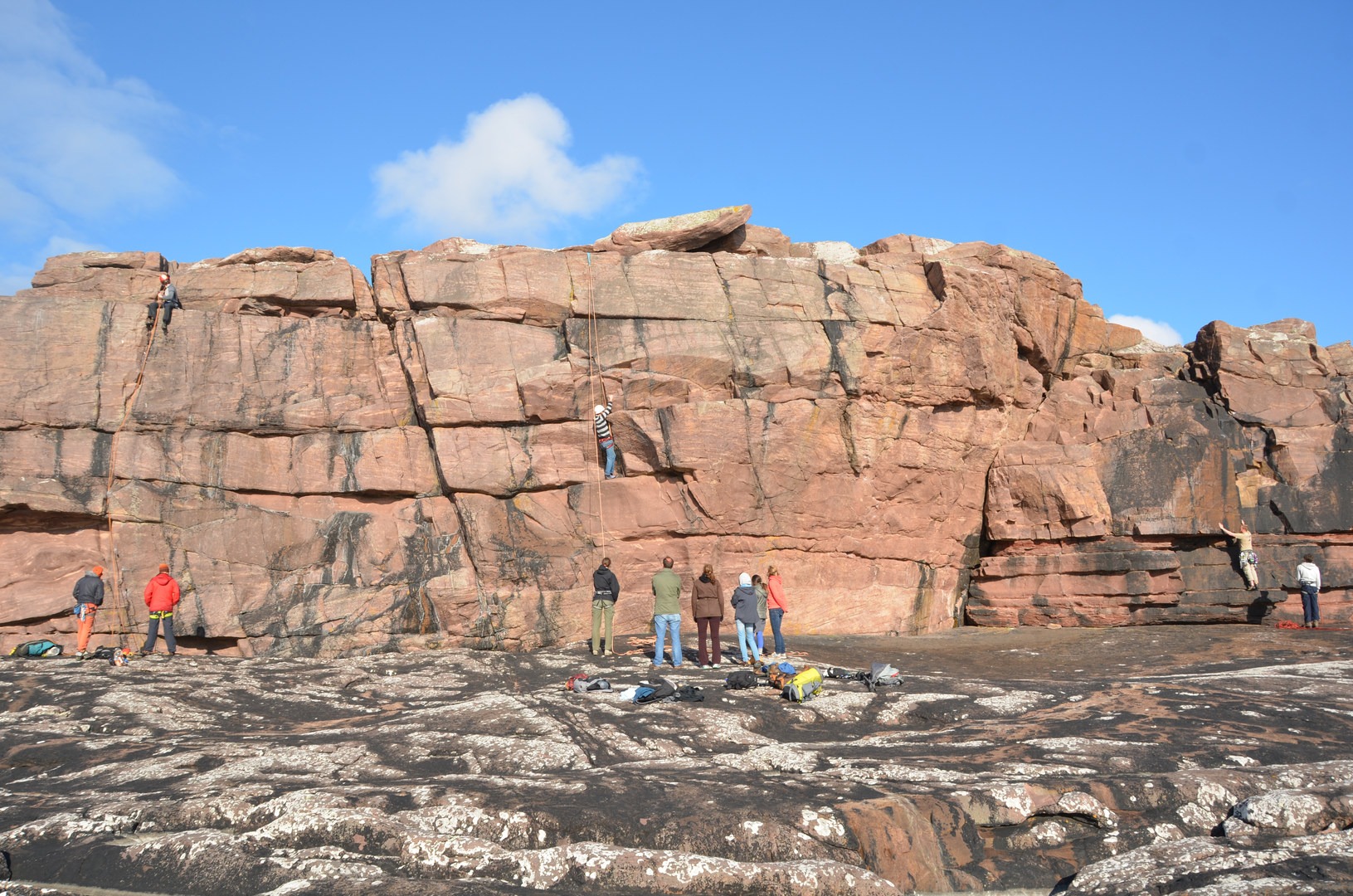You are here
With more than 300 rock climbing routes along a 3.5-kilometer stretch of coastline, the crag at Rieff has a lot to offer. Most are short, but for sheer abundance there are few crags in Great Britain that can match it. For those who don't have access or experience to technical climbing gear, a hike along the wall is a beautiful substitute, passing incredible red-hued stone and mink whales offshore during the summer months.
The climbing is all trad with standards in keeping with British climbing ethics on undamaged rock. There are no anchors, so you will need to bring your own gear and know how to create the anchors. Refer to the British Mountaineering Council videos on sea cliff climbing for more details. A standard rack should be sufficient, though you can normally get by with a full set of nuts and hexes. Sandstone such as this takes nuts incredibly well. It is a very popular area thanks to the high-quality rock and a plethora of routes—so much so that there is a festival in October.
The parking lot stops near a stone wall surrounded by pristine white cottages. Green rolling hills and black rocks cluster with ruins of stone crofters' cottages above a white sand beach and deceptively inviting turquoise waters. It feels like Scotland in the most classic sense.
The UKClimbing.com logbook has a very comprehensive list of routes in the area, though it is recommended to pick up a copy of Scottish Rock North for the best details on the routes. Generally speaking, standard practice is to walk your way up to the northern end and work your way back to the car park. You can walk the full length of the peninsula, but the western side is nicer as it's in the sun most of the day.
For beginners, the Sea Cliff Area across from the little island in Camas Ghlais Bay is best. There is a multitude of easy routes with pretty spots to set trad anchors. Slings (240 cm) are highly recommended as most of the good protection is set back from the cliff edge. Most of these are little more then 8 to 10 metres.
For longer routes, there are a couple 15- to 20-metre routes. Rieff is also a superb deep-water solo location. The quality varies by the tide, but there are ample traverses that make for superb options. The water is very cold even in summer, so some kind of wetsuit is strongly recommended.
Places to stay
Ullapool has many lodging options and is an excellent place to set up base camp. There is also a campsite in nearby in Altandu at the Am Fuaran Pub. However, as this is Scotland, there is the option to wild camp. Scotland has some of the world's most progressive access rights thanks to the 2003 Land Reform Act. The access code permits camping by small groups for two or three nights provided it leaves no trace. You also need to be out of sight of any buildings. At Rieff, there are ample places farther along toward Cnoc Airigh Giorsail that are well sheltered from the wind between the rocks.
Logistics + Planning
Current Weather: Powered by Dark Sky






























Comments
Sign In and share them.